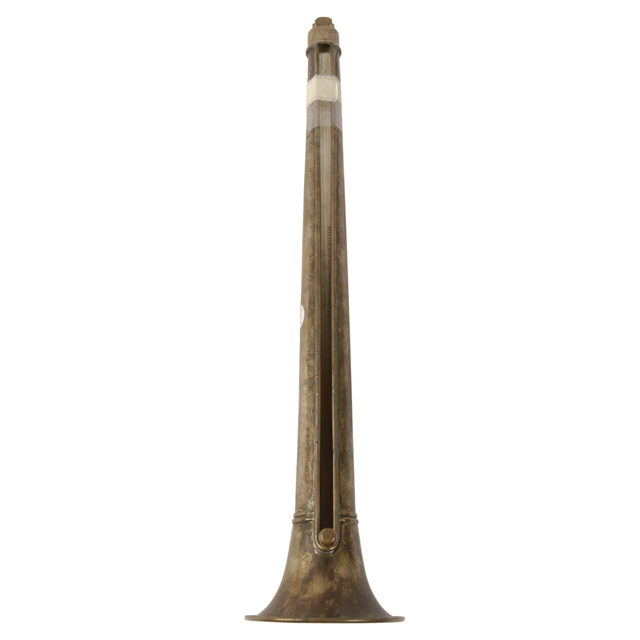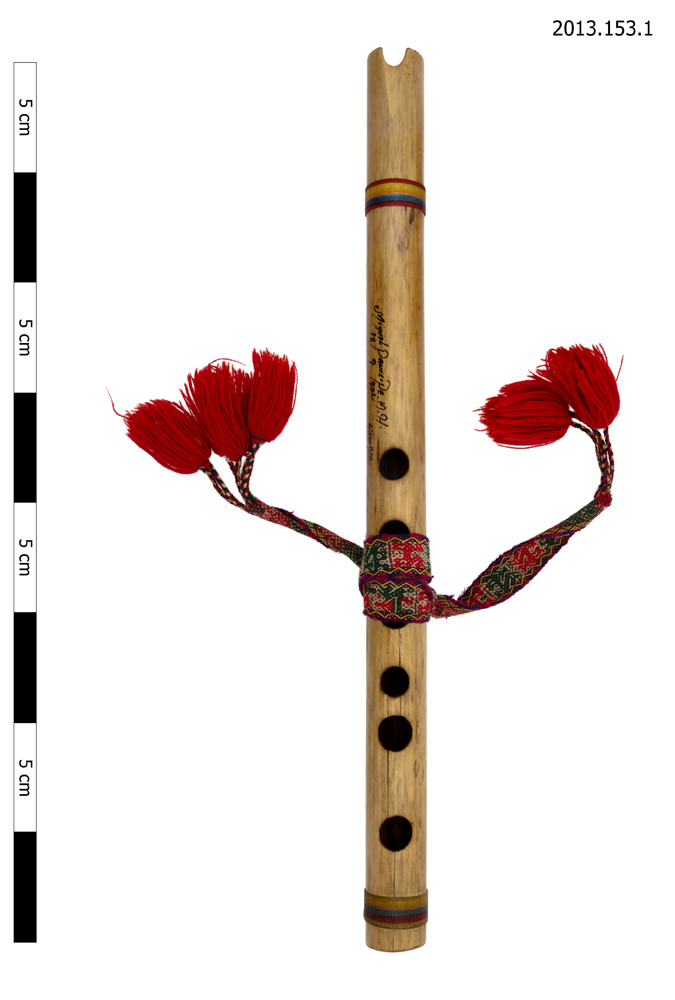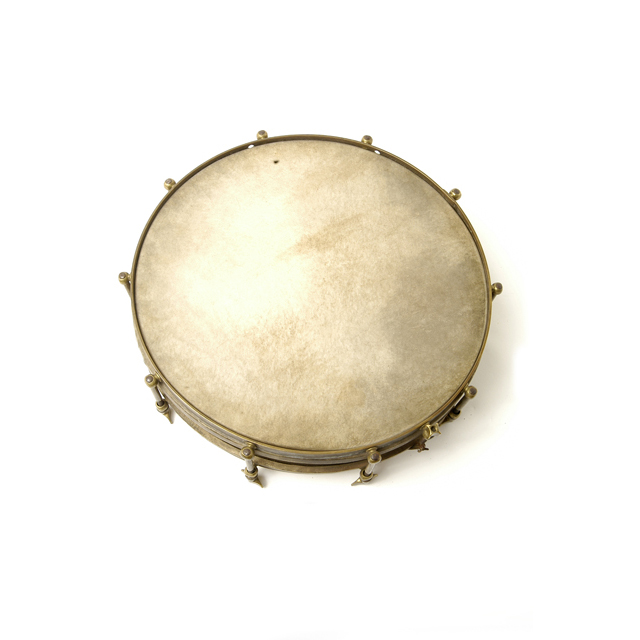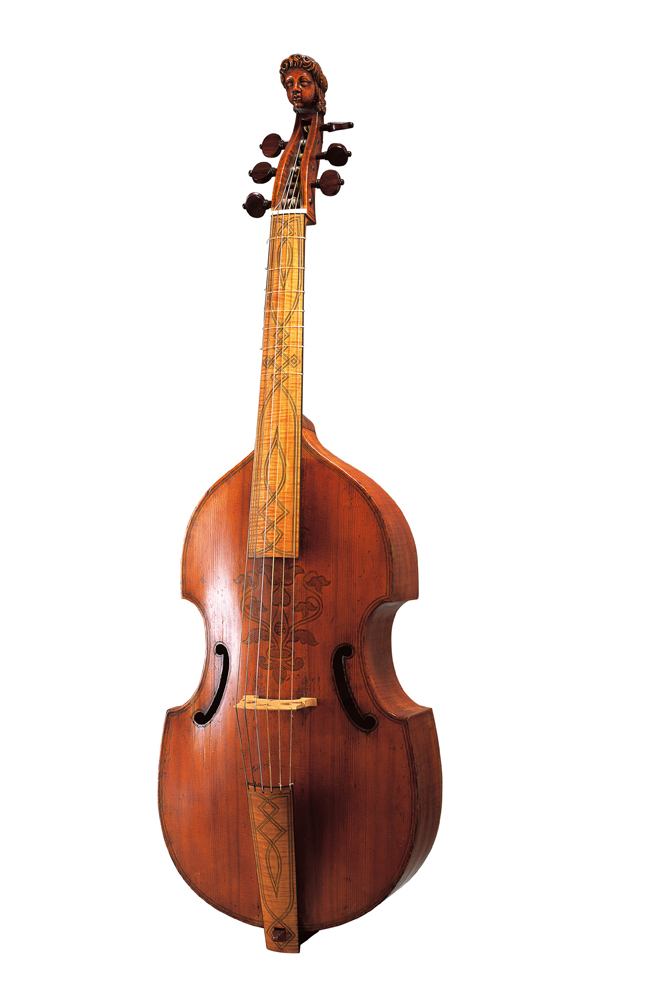
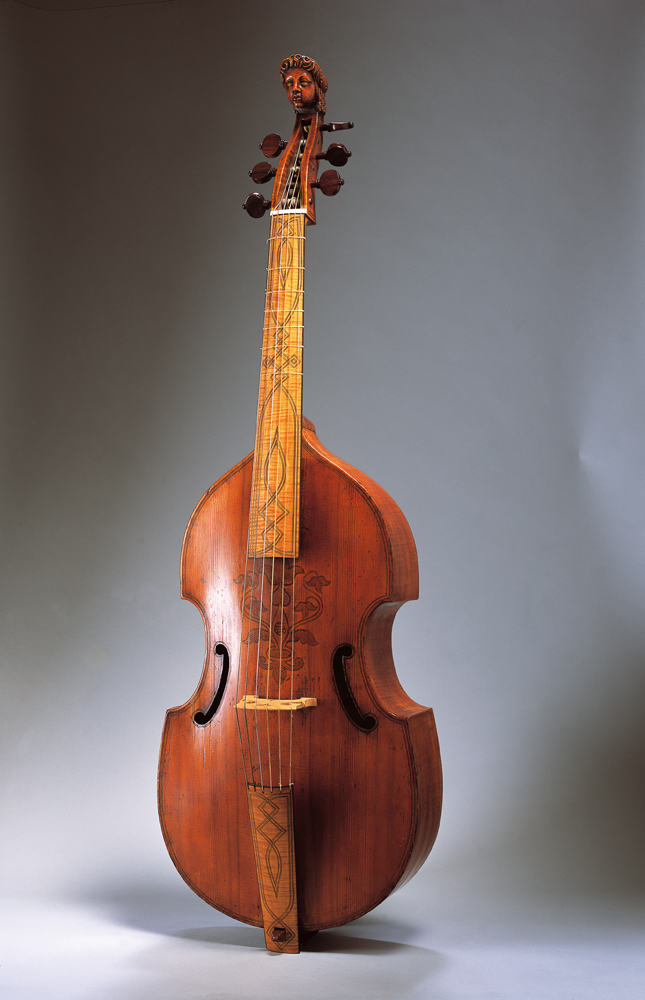
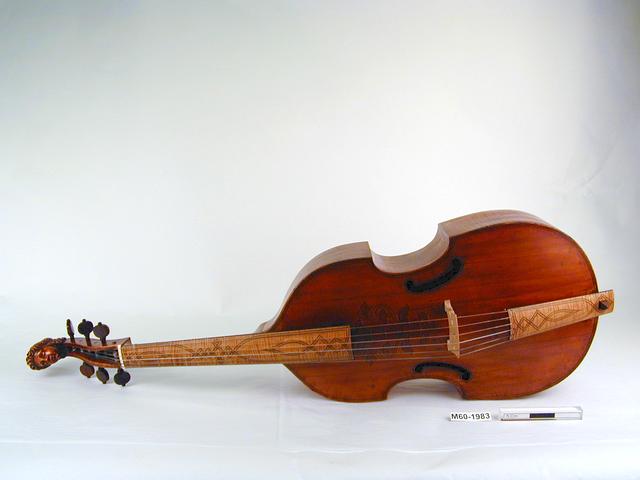
Viola da gamba (bass viol). The back is of two pieces of maple, double purfled and decorated with a central knot and arabesques at the shoulder and bottom. The table is made in three pieces, and the back in two. The peg-box is surmounted by a later carved finial in the form of a female head. This instrument could have had sympathetic strings attached to an earlier neck, which does not survive, just above the mortice and running the length of the body to tuning pins on either side of the hook bar.
Violas da gamba differ significantly from instruments of the violin family. They have sloping shoulders and flat backs, and C-shaped rather than F-shaped sound-holes. Viols also had fretted fingerboards and six strings rather than the violin’s usual four. Barak Norman’s stringed instruments are among the best known and most sought after, not only for the quality of their craftsmanship, but also for their decoration. The elaborate decorative pattern engraved on the back of this instrument acted as a type of designer label, incorporating the maker’s initials, BN, reversed and interlocked. This viol, among the first acquired by Arnold Dolmetsch, became an influential model in the 20th-century early music revival.



